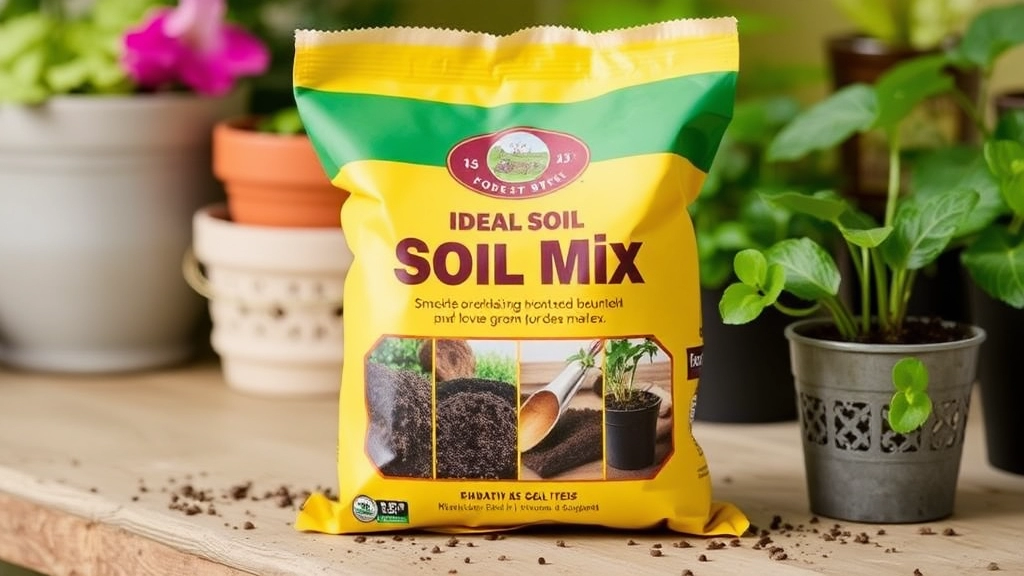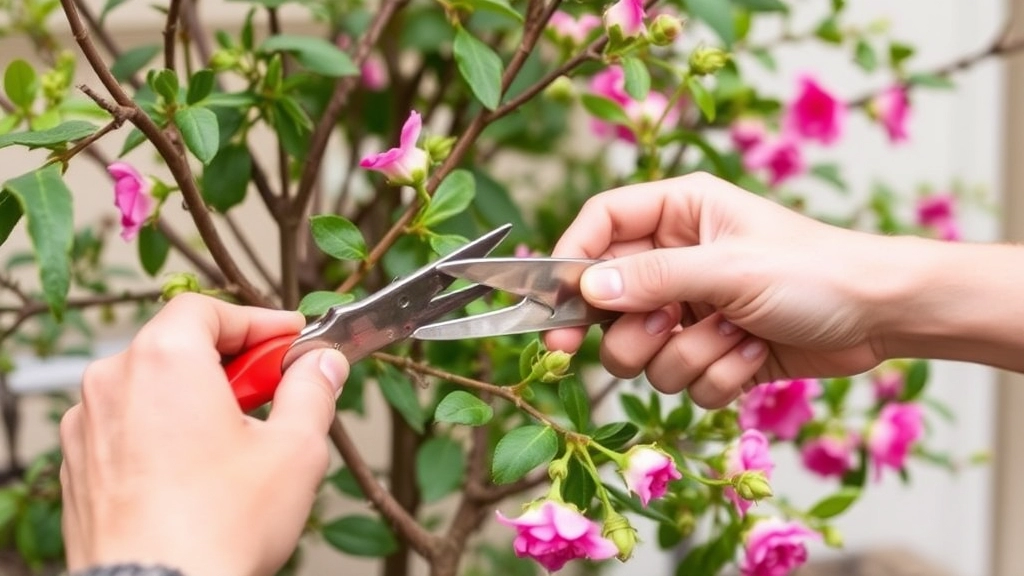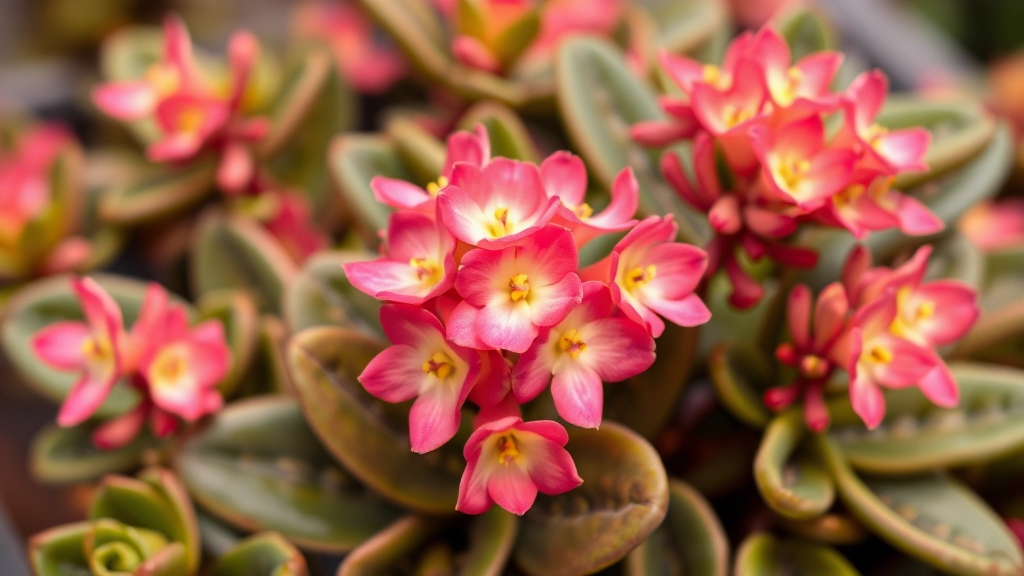Welcome to the world of Kalanchoe Blossfeldiana hybrid care!
As an avid plant enthusiast, I’m thrilled to share my insights on nurturing these vibrant succulents. In this article, we’ll explore the essential aspects of caring for these beautiful hybrids, from optimal light conditions to troubleshooting common issues. Whether you’re a seasoned gardener or a newbie, you’ll find valuable tips to help your Kalanchoe thrive.
We’ll cover everything from watering techniques and soil preferences to pruning practices and pest management. I’ll also share some insider tricks for propagation and seasonal care. By the end of this guide, you’ll be well-equipped to provide the best care for your Kalanchoe Blossfeldiana hybrid, ensuring it rewards you with stunning blooms and lush foliage year-round. Let’s dive in and unlock the secrets to becoming a Kalanchoe care expert!
Optimal Light Conditions for Kalanchoe Blossfeldiana Hybrids
Ever wondered why your Kalanchoe isn’t thriving? Light might be the culprit.
These beauties are sun-lovers, but they’re not beach bums.
They need bright, indirect light to really shine.
Think of it like a perfect tan – enough sun to glow, not enough to burn.
Here’s the deal:
- Aim for 4-6 hours of bright, indirect sunlight daily
- East or west-facing windows are ideal
- South-facing windows work too, but use a sheer curtain to filter harsh rays
Too much direct sun? Your Kalanchoe will throw a fit with scorched leaves.
Not enough light? Say goodbye to those vibrant blooms.
Pro tip: Rotate your plant weekly for even growth. It’s like giving it a 360° spa treatment.
Remember, Kalanchoes are smart cookies. They use daylight hours to trigger blooming.
Want flowers in winter? Give them 14 hours of darkness each night for 6 weeks.
It’s like tucking them in for a long beauty sleep.
Bottom line: Kalanchoe Blossfeldiana hybrids thrive in bright, indirect light. Get this right, and you’re halfway to plant parent stardom.
Ideal Soil and Potting Mix

Alright, let’s talk dirt – literally. When it comes to Kalanchoe Blossfeldiana hybrids, getting the soil right is like giving your plant its own five-star hotel. These succulents are picky eaters, and they won’t thrive in just any old potting mix.
Here’s the deal: Kalanchoes need soil that drains faster than a leaky bucket. Why? Because these babies hate wet feet. Soggy roots are a one-way ticket to plant heaven, and we don’t want that.
So, what’s the secret sauce? A well-draining potting mix. But here’s where it gets interesting:
ð± The Perfect Potting Mix Recipe:
- 2 parts regular potting soil
- 1 part perlite or pumice
- 1 part coarse sand
Mix it up, and you’ve got yourself a five-star resort for your Kalanchoe roots.
But wait, there’s more! pH matters too. These plants like their soil slightly acidic to neutral, around 6.0 to 6.5. It’s like Goldilocks – not too acidic, not too alkaline, but just right.
Now, here’s a pro tip: Don’t go crazy with organic matter. Too much of it can hold onto water like a sponge, and remember, we’re trying to avoid the whole wet feet situation.
“But what about store-bought cactus mix?” I hear you ask. Sure, it can work in a pinch. But honestly, mixing your own gives you more control. Plus, it’s cheaper in the long run, and who doesn’t love saving a few quid?
Bottom line: The ideal soil for Kalanchoe Blossfeldiana hybrids is all about balance. Fast-draining, but not too lean. Slightly acidic, but not a pH nightmare. Get this right, and your Kalanchoe Blossfeldiana succulent will be living its best life, showing off those gorgeous blooms like it’s nobody’s business.
Remember, folks: Happy roots mean happy shoots. So, give your Kalanchoe the soil it deserves, and watch it thrive!
Watering Schedule and Techniques
Let’s talk about watering your Kalanchoe Blossfeldiana hybrids, shall we?
These succulents are pretty chill when it comes to water.
But get it wrong, and you’re in for a world of hurt.
Here’s the deal:
- Water deeply, but infrequently.
- How often? It depends.
- In summer, maybe once a week.
- Winter? Dial it back to every 2-3 weeks.
The golden rule? Check the soil first.
Stick your finger in. If it’s dry 2 inches deep, it’s watering time.
Overwatering is a killer. Literally.
It leads to root rot faster than you can say “oops”.
Best Watering Technique
- Water at the base, not from above.
- Wet leaves are a fungal party waiting to happen.
- Use room temperature water. Cold shocks aren’t fun for anyone.
- Water until it drips from the drainage holes.
- Then, let it drain completely. No soggy bottoms here!
Got a saucer under your pot? Empty it after watering.
Standing water is a big no-no.
During winter, your Kalanchoe might go dormant.
Cut back on watering even more during this time.
Listen, watering isn’t rocket science.
But get it right, and your Kalanchoe will thank you with stunning blooms.
Remember: when in doubt, it’s better to underwater than overwater.
These tough little plants can bounce back from drought.
But too much water? That’s a one-way ticket to plant heaven.
So, keep an eye on your Kalanchoe’s watering needs, and you’ll be golden.
Kalanchoe Blossfeldiana hybrids are pretty chill, but they’ve got their preferences. These Kalanchoe Blossfeldiana succulents are tough cookies, but they’re not fans of extremes. Too hot, and they’ll sulk. Too cold, and they’ll throw a fit.
Remember, Kalanchoe Blossfeldiana hybrids are pretty forgiving. They’ll let you know if something’s off. Just keep an eye on them, and they’ll reward you with those gorgeous blooms. So, there you have it – the lowdown on temperature and humidity for your flowering Kalanchoe Blossfeldiana buddies. Keep ’em comfy, and they’ll keep you smiling!
Fertilization Tips for Healthy Growth
Alright, let’s talk about feeding your Kalanchoe Blossfeldiana hybrids.
These beauties aren’t too fussy, but they do appreciate a good meal now and then.
Here’s the deal:
- During the growing season (spring and summer), feed ’em every 2-4 weeks.
- Use a balanced, water-soluble fertilizer. Something like a 10-10-10 mix works great.
- Dilute it to half strength. These guys don’t need a buffet, just a light snack.
- In autumn and winter, ease off. They’re resting, not partying.
Pro tip: Over-fertilizing is worse than under-fertilizing. Trust me, I’ve been there.
Signs your Kalanchoe’s hungry:
- Pale leaves
- Slow growth
- Fewer blooms
But watch out! If you see crispy leaf edges, you might be overdoing it.
Remember, these succulents store nutrients in their leaves. They’re not constantly craving like some drama queen plants we know.
Bottom line: Feed ’em right, and your Kalanchoe will reward you with a stunning show of blooms.
Just keep it simple, stick to the schedule, and you’ll be golden.
Pruning and Deadheading Practices

Let’s talk about keeping your Kalanchoe Blossfeldiana hybrids looking sharp. Pruning and deadheading might sound like fancy gardener talk, but trust me, it’s just about giving your plant a little haircut now and then.
Why bother with pruning?
Simple. It’s like going to the gym for your plant. It keeps it healthy, shapely, and encourages new growth. Plus, who doesn’t want a bushy, flower-packed Kalanchoe?
Here’s the lowdown on pruning:
- Timing is key: Wait until after flowering. You don’t want to snip off those pretty blooms before their time.
- Tools: Clean, sharp scissors or pruning shears. No need for anything fancy.
- Where to cut: Look for leggy stems or any that are sticking out awkwardly. Cut just above a leaf node.
- How much: Don’t go crazy. Take off about 1/3 of the plant’s height max.
Deadheading 101
Now, deadheading. It’s not as metal as it sounds. It’s just removing spent flowers. Why? It keeps your plant looking tidy and tricks it into producing more flowers. Win-win, right?
Here’s how to deadhead like a pro:
- Spot the faded flowers. They’ll look dry and crispy.
- Follow the flower stem down to where it meets a leaf.
- Snip it off right there.
- Repeat until all the sad-looking flowers are gone.
Pro tip: Don’t toss those cuttings! Stick them in some soil, and you might just end up with baby Kalanchoes.
Remember, pruning and deadheading aren’t about perfection. It’s about keeping your plant happy and healthy. So don’t stress if it’s not Instagram-worthy right away. Your Kalanchoe Blossfeldiana leaves will thank you with more flowers and a bushier look in no time.
Got any pruning horror stories? We’ve all been there. The key is to start small and get a feel for it. Before you know it, you’ll be pruning like a pro, and your Kalanchoe will be the envy of the neighbourhood.
Common Pests and Diseases
Let’s chat about the bugs and baddies that might crash your Kalanchoe party.
These succulents are pretty tough, but they’re not invincible.
Here’s what you need to watch out for:
Pests:
- Mealybugs: These little cotton-like pests love to suck the life out of your plants
- Spider mites: Tiny vampires that leave webs and cause leaf damage
- Aphids: Green or black bugs that cluster on new growth
Diseases:
- Root rot: Too much water can lead to this nasty problem
- Powdery mildew: Looks like someone dusted your plant with flour
- Leaf spot: Brown or black spots that can spread if not dealt with
Now, don’t panic! Most of these issues are fixable if you catch ’em early.
For pests, a good spray down with neem oil usually does the trick.
Diseases? Often, it’s about adjusting your care routine.
Less water, more air flow, and you’re golden.
Remember, prevention is key. Keep your Kalanchoe happy and healthy, and it’ll be less likely to attract trouble.
Got any pest stories to share? Drop ’em in the comments!
Alright, let’s dive into how we can make more of these gorgeous Kalanchoe Blossfeldiana hybrids. Trust me, it’s easier than you might think!
Here’s a cool trick I learned:
1. Snip off a healthy leaf
2. Let it dry for a day or two
3. Stick it in some well-draining soil
4. Water lightly and wait
Boom! In a few weeks, you’ll see tiny plantlets popping up. It’s like magic, I swear!
If you’re in a hurry, stem cuttings are your best bet:
– Cut a 4-inch stem just below a leaf node
– Remove lower leaves
– Dip in rooting hormone (optional, but helps)
– Plant in moist soil
– Keep warm and slightly humid
Pro tip: I’ve found that using a clear plastic bag over the pot creates a mini greenhouse effect. Just don’t forget to poke some holes for air!
Got a big, bushy Kalanchoe? Here’s what you do:
1. Carefully remove the plant from its pot
2. Gently separate the roots into smaller clumps
3. Replant each section in its own pot
It’s like giving your plant a haircut and getting new plants for free. Who doesn’t love a bargain?
Honestly, I rarely bother with seeds. It takes forever, and the results can be hit or miss. But if you’re feeling adventurous:
– Collect seeds from spent flowers
– Sow on top of moist soil
– Cover with a thin layer of sand
– Keep warm and moist
Just don’t expect miracles overnight. This method takes time and patience.
Look, we’ve all been there. You think you’re doing everything right, but your Kalanchoe Blossfeldiana cuttings just won’t take. Here are some common issues:
– Overwatering: Seriously, these guys hate wet feet
– Poor light: They need bright, indirect light to thrive
– Wrong temperature: Too cold, and they’ll sulk
– Impatience: Give them time, they’re not instant noodles!
Remember, propagating Kalanchoe Blossfeldiana hybrids is all about creating the right conditions and then letting nature do its thing. It’s not rocket science, but it does require a bit of care and attention.
So, there you have it â your guide to making more of these beautiful plants. Whether you’re a seasoned pro or a newbie, these propagation methods for Kalanchoe Blossfeldiana hybrids are sure to help you expand your collection. Happy propagating!
Seasonal Care and Maintenance
Alright, let’s chat about keeping your Kalanchoe Blossfeldiana hybrids happy all year round.
These beauties need different TLC as the seasons change.
Spring: Time to wake ’em up!
- Gradually increase watering and feeding
- Move them to brighter spots
- Trim any winter-damaged bits
Summer: Party time for your plants!
- Water more often, but don’t drown ’em
- Protect from scorching midday sun
- Feed every 2-3 weeks with a balanced fertiliser
Autumn: Prep for the chill
- Reduce watering and feeding
- Move to a cooler spot
- Stop deadheading to encourage winter blooms
Winter: Cosy time
- Water sparingly, just enough to prevent shrivelling
- Keep away from cold drafts and radiators
- Enjoy the winter flowers!
Pro tip: Always adjust your care based on what you see.
Your Kalanchoe will tell you what it needs if you pay attention.
Remember, seasonal care is key to keeping your Kalanchoe Blossfeldiana hybrids thriving year-round.
Troubleshooting Common Issues
Alright, let’s dive into the nitty-gritty of Kalanchoe blossfeldiana hybrid problems. Trust me, I’ve been there, and I’ve got your back.
Yellow Leaves: What’s the Deal?
Ever walked up to your Kalanchoe and thought, “Why’s it looking like a banana?” Here’s the scoop:
- Overwatering: Ease up on the H2O, pal.
- Nutrient deficiency: Time for a snack (fertilizer).
- Too much sun: Move it to a shadier spot.
Dropping Flowers: The Heartbreak
Nothing’s worse than watching those pretty blooms hit the deck. Here’s what might be up:
- Temperature shock: Keep it cozy, not too hot or cold.
- Dry soil: Give it a drink, but don’t drown it.
- Pest party: Check for uninvited guests.
Leggy Growth: The Stretch Armstrong Effect
If your Kalanchoe’s reaching for the stars, it’s probably not getting enough light. Scoot it closer to a window, but watch out for scorching.
Brown Leaf Tips: The Crispy Conundrum
Crispy tips aren’t just for chicken wings. For Kalanchoes, it could mean:
- Low humidity: Mist it or pop it on a pebble tray.
- Fertilizer burn: Ease up on the plant food.
Wilting: The Sad Sack Syndrome
A droopy Kalanchoe is a cry for help. Check these:
- Underwatering: Give it a good soak.
- Root rot: Check for mushy roots and repot if needed.
Pest Invasion: The Unwelcome Guests
Spotted some creepy crawlies? Don’t panic:
- Mealybugs: Dab with alcohol on a cotton swab.
- Spider mites: Spray with neem oil.
- Aphids: Blast ’em off with water.
Remember, troubleshooting Kalanchoe blossfeldiana hybrid issues isn’t rocket science. Keep an eye out, act fast, and you’ll have a happy, healthy plant in no time. And if all else fails? Well, there’s always propagation to start fresh. You’ve got this!
FAQs: Kalanchoe Blossfeldiana Hybrid Care
Q: How often should I water my Kalanchoe Blossfeldiana hybrid?
A: Water your Kalanchoe when the top 2 inches of soil feel dry. This typically means once a week in summer and every 2-3 weeks in winter. Remember, it’s better to underwater than overwater these succulents.
Q: Can I keep my Kalanchoe Blossfeldiana hybrid outdoors?
A: Yes, but only in mild climates. These plants prefer temperatures between 60-85°F (15-29°C). Bring them indoors if temperatures drop below 50°F (10°C) or rise above 90°F (32°C).
Q: Why aren’t my Kalanchoe Blossfeldiana hybrid’s flowers blooming?
A: Lack of blooms could be due to insufficient light or improper day length. Kalanchoes need 14 hours of darkness each night for 6 weeks to trigger blooming. Try mimicking these conditions if you’re not seeing flowers.
Q: How do I propagate my Kalanchoe Blossfeldiana hybrid?
A: The easiest method is through leaf or stem cuttings. Allow the cutting to callous over for a day or two, then plant in well-draining soil. Keep the soil lightly moist until roots develop.
Q: What type of soil is best for Kalanchoe Blossfeldiana hybrids?
A: Use a well-draining potting mix. A combination of 2 parts regular potting soil, 1 part perlite, and 1 part coarse sand works well. These plants prefer slightly acidic to neutral soil (pH 6.0-6.5).
Q: How often should I fertilize my Kalanchoe Blossfeldiana hybrid?
A: Fertilize every 2-4 weeks during the growing season (spring and summer) with a balanced, water-soluble fertilizer diluted to half strength. Reduce or stop fertilizing in autumn and winter.
Q: My Kalanchoe’s leaves are turning yellow. What’s wrong?
A: Yellow leaves often indicate overwatering. Check the soil moisture and adjust your watering schedule. It could also be due to nutrient deficiency or too much direct sunlight.
Q: How do I prune my Kalanchoe Blossfeldiana hybrid?
A: Prune after flowering to maintain shape and encourage bushiness. Remove spent flowers (deadheading) to promote more blooms. Always use clean, sharp scissors or pruning shears.

